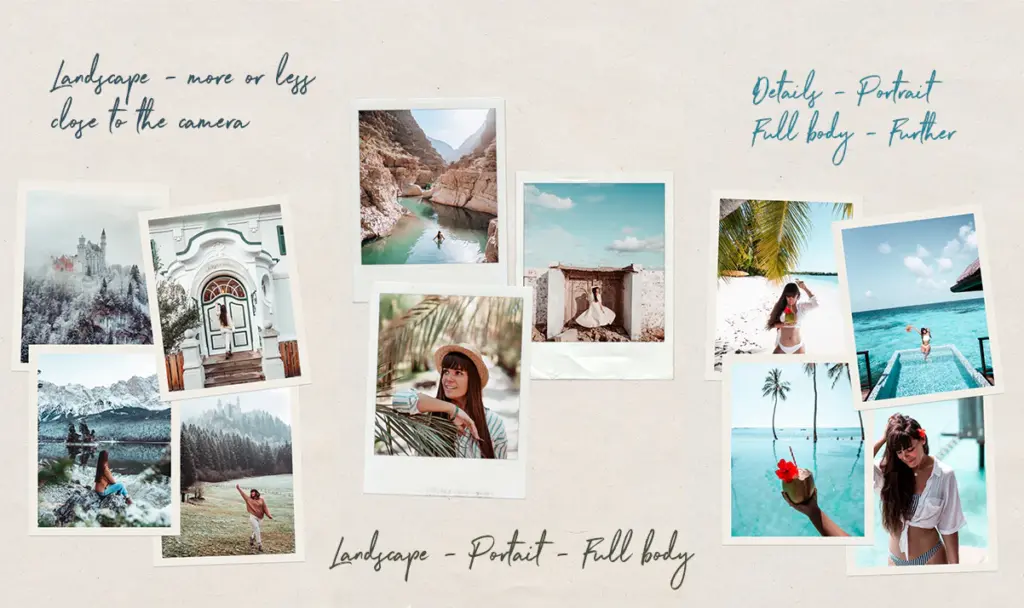Instagram’s top feeds are subtly shaped by a color grading technique that is surprisingly good at turning uncurated photos into carefully selected experiences. What appears impromptu on a scroll is frequently the result of careful preparation, unified color schemes, and editing decisions that have become very akin to those made in movies. Influencers and companies are using presets to create digital stories where tone, mood, and color are just as crucial as the subject matter, much how filmmakers use grading to create atmosphere in movies.

Research is the first stage in the journey, and its goal is very obvious. On Pinterest, creators save posts into themed collections, create mood boards, and browse hashtags. They spot reoccurring patterns, such as golden-hour horizons, somber cityscape walls, or soft beige cafés. Because it drastically lowers unpredictability and gives structure to feeds that could otherwise appear erratic, this planning is especially advantageous. The process is quite similar to how fashion designers map collections: implementation comes after inspiration.
| Subject | Instagram Feed Aesthetics |
|---|---|
| Central Idea | Consistent color grading is shaping influencer culture |
| Key Process | Research, planning, editing, preset use, sequencing |
| Tools | Lightroom, Flourish Presets, Preview app |
| Purpose | Build consistent, recognizable, and aspirational feeds |
| Broader Impact | Influences beauty ideals, consumer behavior, branding |
| Industry Connection | Mirrors methods used in fashion, film, advertising |
| Reference |
Planning a shot then turns into a discipline exercise. Influencers plan their itinerary, taking accessibility, traffic, and light levels into account. Equal care is taken when selecting outfits, making sure that backdrops and tones blend well. As a backup piece that unifies several concepts in various locations, even the denim jacket becomes remarkably adaptable. This method of preparation allows creators to produce weeks of content in a few days, making the filming process extremely efficient. The method is incredibly good at making the most of time and creative energy.
The process of shooting is dynamic, with artists experimenting with different setups and taking detail, portrait, and landscape photos. They streamline processes and free up human talent for innovation rather than logistics by changing costumes on-site, adjusting angles, and occasionally replicating stances in other contexts. Structure and spontaneity go hand in hand in this discipline, which is similar to editorial magazine shots. The procedure guarantees that the final feed feels cohesive, varied, and incredibly resilient.
But editing is the pivotal moment. Presets, which are frequently bought from businesses like Flourish Presets, are more than just tools; they are visual identity concepts. They are incredibly good at bringing disparate images together, transforming coffee mugs and street corners into components of a shared mood. Deeper colors inspire closeness or nostalgia, whereas a light and airy tone emphasizes minimalism and optimism. A brand’s choice of font or color scheme is very similar to the default selection, resulting in an instantly identifiable signature that fans unconsciously trust.
Because it democratizes what was formerly privileged, this stage is especially revolutionary. Studios used to be needed for professional color grading, but now anyone with a smartphone can do incredibly powerful adjustments in a matter of seconds. It has not only influenced the aesthetics of influencers but also elevated tiny enterprises to the level of global brands. The same strategies are employed by cafés, boutiques, and lifestyle entrepreneurs, demonstrating how social media has made it harder to distinguish between professional marketing and personal storytelling.
The last step is to arrange the photographs in feed programs like Preview. In order to maintain rhythm, creators rotate postings into visually appealing color diagonals, switching between close-ups and broad pictures. The strategy’s ability to reward consistency makes it very effective at sustaining engagement on Instagram. A unified feed attracts the eye and encourages longer browsing and more devotion, whereas a disorganized one may discourage followers. This works incredibly well at turning infrequent viewers into devoted ones.
This approach has an impact that goes well beyond influencers. The same ideas have been embraced by celebrities, who change their feeds with every campaign or album cycle. With campaign workers meticulously adjusting colors to convey urgency, serenity, or optimism, politicians have embraced visual storytelling. For public leaders who today depend as much on visual credibility as on spoken words, the strategy has been very helpful. Just as journalists used to rely on a consistent voice and style, a consistent feed has emerged as a new way to establish trust.
But there are concerns about the cultural influence. The difference between presentation and reality widens when cafés appear more vibrant on Instagram than they do in real life or when preset skin tones seem remarkably perfect. Although this tension is quite effective at selling fantasies, it may be especially damaging when it perpetuates unrealistic expectations. Simultaneously, it has enabled smaller producers to compete on an equal basis with international campaigns, demonstrating that, with careful execution, creativity can surpass finance. This influence’s dual nature is incredibly powerful at igniting discussions about aspiration and sincerity.
The fact that this secret has grown so embedded is undeniable. Instagram has evolved over the last ten years from a place for informal photos to a stage where each hue has significance. Influencers are increasingly monetizing their editing techniques by selling their own presets. They are curating lifestyles and selling the means to duplicate them by fusing creativity and commerce. Because it redefines impact from merely being watched to instructing others on how to create the same visual identity, this loop is especially inventive.
The tendency has changed our perceptions of brands and products in relation to customer behavior. A restaurant may acquire popularity because its furnishings match a popular preset palette, while a skincare brand may prosper because its packaging complements an influencer’s subdued feed. These small interactions are incredibly resilient, permeating our sharing, consumption, and even memory of experiences. In the digital age, the color grading secret has evolved from an aesthetic tool to a source of income.

